Symbol of the Nineties: The Big Body E100 Toyota Corolla
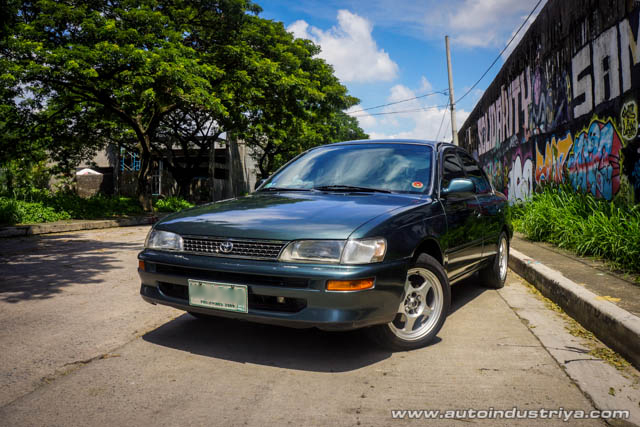
The unofficial compact car that defined the 90s
If there is one type of automobile that could sum up the automotive scene of the 1990s, it would be the compact sedan. Used by many as family cars or bought by young professionals as their first car, the compacts essentially became the multi-purpose automobile of the time besides AUVs.
There were several examples that made the decade as such but few could be as quintessential as the E100 Toyota Corolla, more popularly known as the ‘Big Body’.
With its sudden increase in body dimension, heavier curb weight and more rounded shape than its predecessor, the E90, the Big Body Corolla departed from the subcompact class and cemented itself in the compact segment. Available back then in three trim levels; XL, XE and GLi, the Big Body, like all Corollas since the the 90’s, was geared towards for fleet use or as a compact luxury cruiser
We take a look back at the renowned compact sedan as we check out how the Big Body Corolla has fared through the years with a ride review.
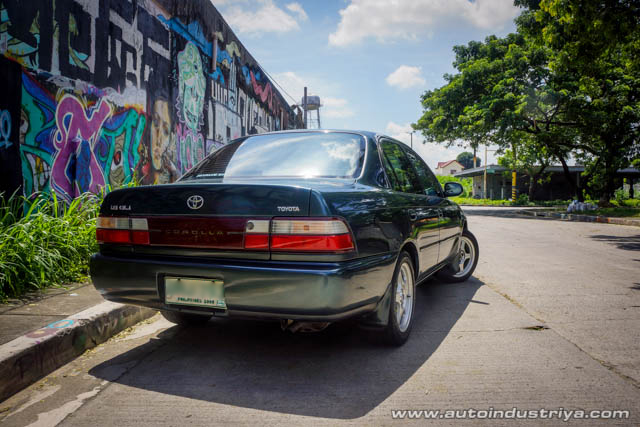
Differentiating the three main variants was easy back in the day. The XL versions were the base models that had the manual wind up windows, manual mirror adjustment, no airbags, and the 1.3-liter 2E carburetted engine with a 5-speed manual gearbox. The thing about the XL is its unassisted or “pawis” steering, a Filipino play on words denoting that you’ll sweat while driving in traffic with the standard rack and pinion. The XE version improved on that, adding power steering, a tachometer, and alloy wheels instead of steel rims.
The GLi version was the top-of-the-line variant, and we didn’t have to go far for this as my dad still owns his Big Body Corolla; a refreshed version with the updated details like the rear garnish and the larger 4-spoke steering wheel. Bought brand new by his sister back in 1996, it was soon owned by my father since there was a lack of garage space in our then pre-renovated home.
Finished in Dark Emerald Pearl, this particular shade of color became one of the facelift’s signature hue in the country aside from the early Sunfire Red Pearl, Dark Teal Metallic and Teal Mist Metallic.
To the eyes, the ‘96 facelift made the already sophisticated-looking compact, appear even more posh. For the range topping GLi, it gets a taillight garnish, redesigned combination taillights that are reminiscent in the E90 Corolla, 15-inch alloys nicknamed the ‘Lea Salonga wheels’ (ours now have aftermarket wheels) , color-matched door handles, chrome grill and chrome accents on the back window, door apertures and windshield.
Overall, the shape and look of the E100 (this one being an AE101) Corolla exudes the styling direction of that decade but it doesn’t look too out of place in today’s motoring world of sharp lines, sleek silhouettes and curvaceous shapes.
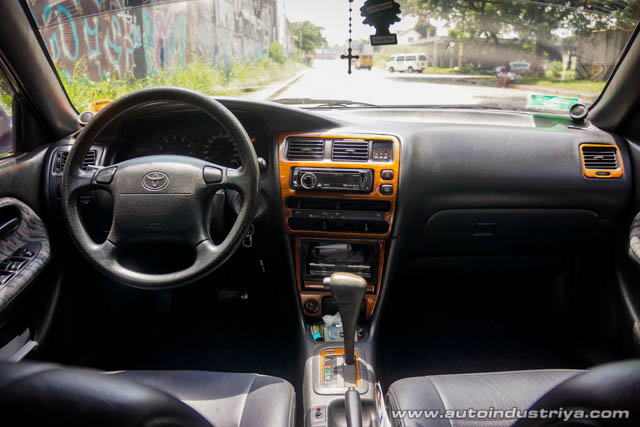
The interior of the Big Body Corolla focuses more on function rather than form. Hues of gray plastic almost cover the entirety of the cabin and is only contrasted by gray-aqua fabric door trims and faux wood accents on the center console and aircon vents. A leather-wrapped steering wheel on high-end models wasn’t standard back then as this one only gets a urethane unit. Compared to today’s interiors, it lacks a bit of flair but like most Toyotas, the controls and functions of the Big Body are ergonomic and not hard to reach.
The front seats are still comfortable despite its age and offer a bit of side support when taking a bend rather quickly. Compare it to today’s modern compacts, the Big Body Corolla feels like you are a part of the car instead of being ‘on top’ of it as both driver and passenger/s sit low inside the Corolla.
Rear legroom is decent though leaves something to be desired. Anyone that towers beyond 5’8 will have a problem getting comfortable at the back. Though given our medium build and height, the Big Body’s interior space was enough.
There are some rather nifty features aboard the Big Body GLi Corolla that make it feel more premium like a digital clock, a back window defogger, power windows, and side mirrors which were not yet standard on most compacts at the time, central locking with alarm and front cupholders.
Bought brand new, this model came with a 1-DIN audio head unit that came with an Alpine 6-disc CD changer that was stowed at the trunk. Today however, it has a Pioneer head unit that supports AM/FM/CD/USB/Aux.
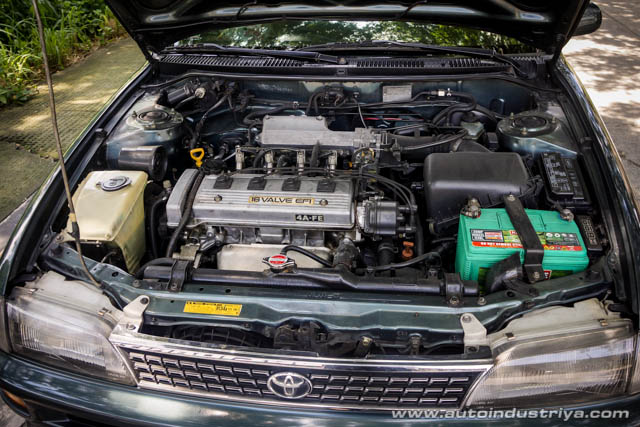
Being the range-topping model, this Corolla is powered by the 1.6-liter 4A-FE inline-four that delivers 113 PS and 140 Nm of torque to the front wheels. Mated to a 4-speed automatic gearbox with an overdrive function, the powertrain is spritely and quite responsive.
Driving around town and through the city, the engine delivers enough low-end torque thanks to its twin-cam configuration. With its impressive steering radius, it tackles tight side streets and narrow roadways with ease which also helps when making tight U-turns or parking in tricky spaces. The steering is finely weighted and gives good feedback, providing a lot of feel compared to many electronic power steering systems. In other words, this Corolla, who’s design is well past 20 years old, still feels modern and contemporary to drive.
This nineties sedan also shines on the highway nearly 20 years after its initial release. As mentioned earlier, the twin-cam powertrain is quite spirited. Even though the engine is geared towards fuel economy, acceleration is sharp and like most common automatics today, it can adapt to the driver’s input whether it be for city driving, overtaking or for cruising.
The sound and vibration suppression on the Big Body was top class during its time as it was originally engineered to be a “Lexus” for the masses according to the model’s development chief, Dr. Akihiko Saito. Technologies from the 1989 Lexus LS such as improved insulated steering rack mountings, thicker rubber door seals and jambs provided a quiet interior. Perhaps the best NVH feature of the car is the bitumen wafer sandwich bulkhead which isolated engine noise, allowing for a quieter ride. (Kudos to our Inside Man, Tito F. Hermoso for telling us about it)
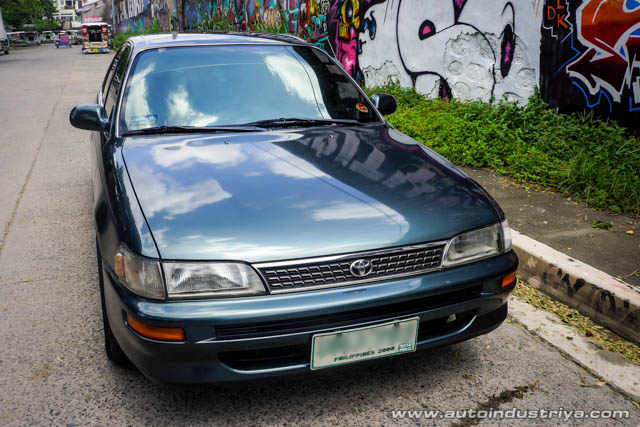
It is also one of the last Corollas to have a MacPherson Strut/multi-link suspension layout as ‘Altis’ models now made use of a strut/torsion beam setup. Torsion beams free up more space for the trunk and are more compact, lighter and are also cheaper to manufacture and maintain. The multi-link system however provides a better ride and can be adjusted for fine-tuning. The downside of the multi-link is its complexity.
While not yet considered a ‘classic’, the Big Body is one of those cars that carry a cult following (i.e. Volkswagen Beetle, Ford Mustang, Honda Civic). Aside from the revered Hachi-Roku AE86, the bulletproof E90 and the beloved E120 Altis, mention Corolla to anyone and they will most likely think of the Big Body E100.
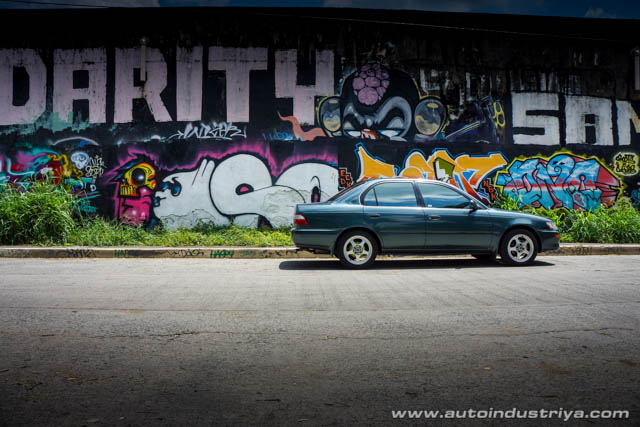
For its part, the E100 Corolla was a car made by engineers with little regard to cost-cutting. This humble compact was made for the world and its bulletproof (figuratively) reliability is what made the Corolla a default choice for Filipino customers be it for the fleet market, covered by the XL and XE models, to those looking for a well-equipped compact cruiser with the GLi.
The E100 Corolla was the right car for the right time and is everything the Filipino needed during the 90’s. It’s a tough, rugged, reliable and bulletproof compact with modern engine tech, easy maintenance and capable enough to run over a million kilometers in harsh environments.
The significant amounts of 90’s Corollas still running on our streets are a true testament to that.
Source: Autoindustriya.com